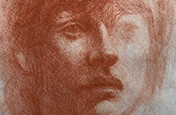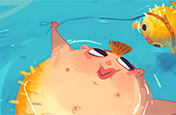Pup portraiture: How to draw dogs.
Whether you’re painting a realistic dog or sketching a cute cartoon puppy, pick up some new tricks for capturing canine personality and emotion.
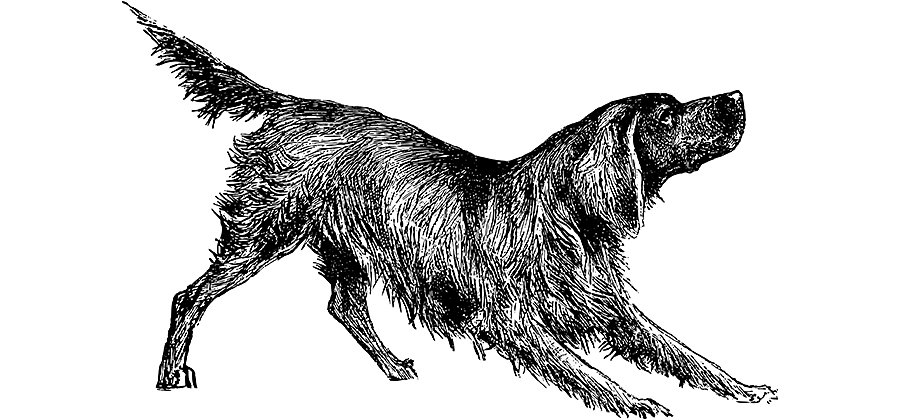
Best friends deserve close attention.
Dogs are ideal companions. They’re often more attuned to our thoughts and feelings than we are, and they tell us a lot through their expressions and body language. To draw a dog well, representing accurate anatomy and capturing their distinct personality, you have to examine them closely.
Study reference photos.
Before you follow any step-by-step drawing tutorials, determine the breed or combination of breeds you want to draw. A dachshund has quite different dimensions from a husky or golden retriever, and all of those have completely different faces from a pug or Boston terrier. Study examples of the breed in photos, noting the distinctive characteristics. Key differences tend to show up in the following areas:
- Body type: Large or small, broad- or narrow-chested, long- or short-legged
- Nose length and shape: Pronounced snout or smushy face, wide muzzle or narrow
- Ears: Upright or folded, large or small
- Fur length: Short or long; straight, wavy, or curly
- Fur color: Everything from solids to stripes to spots or combinations of all three
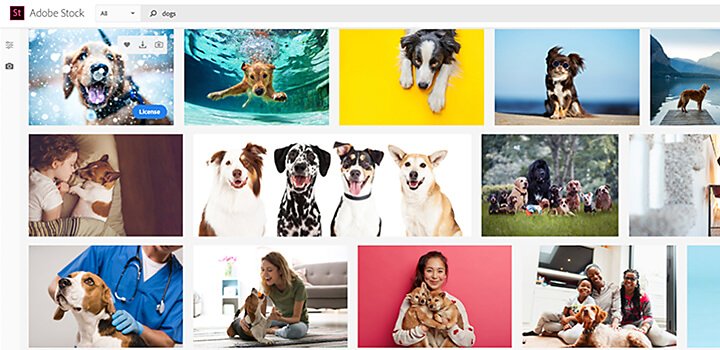
For useful reference photos of many types of dogs in every possible position, explore dog photos on Adobe Stock. If you’re drawing a portrait of a specific dog, try to find as many reference photos as you can to get a sense of the dog’s personality.
If you draw or paint digitally, you can pull reference right onto your canvas and even practice by tracing one or two digital dog photos. Check out this step-by-step Adobe Photoshop Sketch tutorial to get started.
Understand dogs’ bodies.
Your drawing can benefit from learning about canine muscular and skeletal structure. “One of the most helpful things when you’re drawing any kind of animal is to realize how their anatomy conforms with our own,” says artist Jonathan Case. A dog’s skeleton is fairly similar to that of a human, with a spine connecting the head and neck to a prominent rib cage and pelvis, but the hips and neck are angled, and the proportions of the bones are different.
Dogs’ legs can be particularly difficult to capture. “What we think of as the dog’s elbow is actually like their ankle, and their back legs have a very different structure from the front,” artist Megan Levens explains. “They’re up on their toes like most animals.” Becoming familiar with the skeletal structure gives you a literal and figurative foundation to build upon. “Once you have an idea of how to rest that back foot and understand where their thigh muscle sits in relation to their knee and their ankle, you get a better understanding of how to proportion them,” says artist Lucas Elliott.
Begin your drawing with basic shapes.
Use simple shapes to create a rough outline of the dog’s body. Draw lightly — or, if you’re drawing digitally with Adobe Fresco, use a layer you’ll hide later. “For a dog with a longer snout, I’ll draw a ball or a rounded cube for the main part of the dog’s head, the cranium, and then I’ll add a cylinder, rectangle, or some sort of block for the rest of the snout,” says Levens. “For shorter-faced dogs, it ends up being two cubes kind of blocked together, or even one cube. And then a cylinder for the chest and a smaller rounded cube for the hip area.”
For the legs, remember that the upper leg bones (femur and humerus) appear shorter than the lower leg bones. Check your sketch against reference photos and make adjustments until you’re satisfied with the proportions.
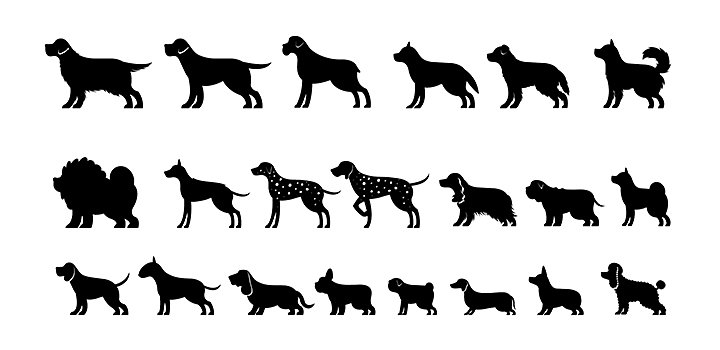
Refine the silhouette.
Start turning those basic shapes into a dog’s body by connecting and refining the outline. Again, refer to your photos to judge whether the back is a straight line or slightly curved. Adjust as necessary, especially when checking those tricky hind legs. If the dog is fluffy, the outline may be softer, but don’t forget about the muscle under the fur. “You still have to know where the form is and how that dictates where the fur is going to grow,” Levens says. “That’s going to show you where the musculature is.”
Fill in the blanks.
Begin erasing your guidelines or hiding the outline layer if you’re drawing digitally. Then add more detail to the body contours, shading in the shadows that suggest muscles and fur variations. Note how the light hits the ears and nose, and don’t forget the tail. For valuable tips on how to add color and texture to an adorable cartoon dog — and which brushes to use — watch this Adobe Live tutorial with illustrator and designer Natalie Murrow.
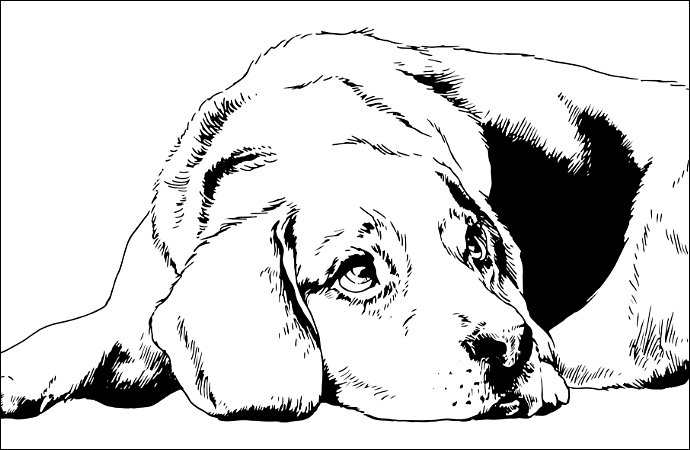

Find the soul in the eyes.
A dog’s eyes say a lot about their personality and mood, so spend time getting them right. Megan Levens says this is mostly about paying attention to shape and size. “Expression in eyes can come through how heavily lidded they are. You can exaggerate a little bit more with eyes to get it across. A very relaxed dog would have eyes a little smaller. A little less white in the eyes shows a calmer dog. When you see the whites of the eyes that tends to mean they’re excited.”
Capture the expression.
Is the dog happy or sad, relaxed or excited? Every dog, from the smallest Chihuahua to the biggest German shepherd, is a bundle of emotions. You can portray those better by slightly exaggerating their features. “You can pull the lips back a little bit more when it smiles, so the lip almost touches the eye,” Elliott says. A happy dog’s ears tend to sit back, and their tongue may stick out, which you might also exaggerate a little. By contrast, a sad dog’s ears droop, while an angry dog will display pricked-up ears, furrowed brow, narrowed eyes, and even bared teeth.

Train yourself.
Just as training a dog requires hours of patient practice, so does training your hand and eyes to draw a dog. Persevere through the dog days of your initial illustration efforts, and you’ll keep improving your dog drawing skills. Once you’ve made progress on dogs, try sketching wolves or try another four-legged animal with a sketch of a horse.
Contributors
Jonathan Case, Megan Levens, Lucas Elliott
You might also be interested in…
How to draw a rose.
Improve rose drawings by learning about plant anatomy in this step-by-step guide.
Honing your ability to draw faces and heads.
Get tips for drawing better facial features, from realistic portraits to cartoons.
How to draw a wolf.
Capture the wild spirit of the wolf with these drawing tips.
How to become a professional illustrator.
Get tips on portfolio creation and art presentation to help you kick off a new career.

